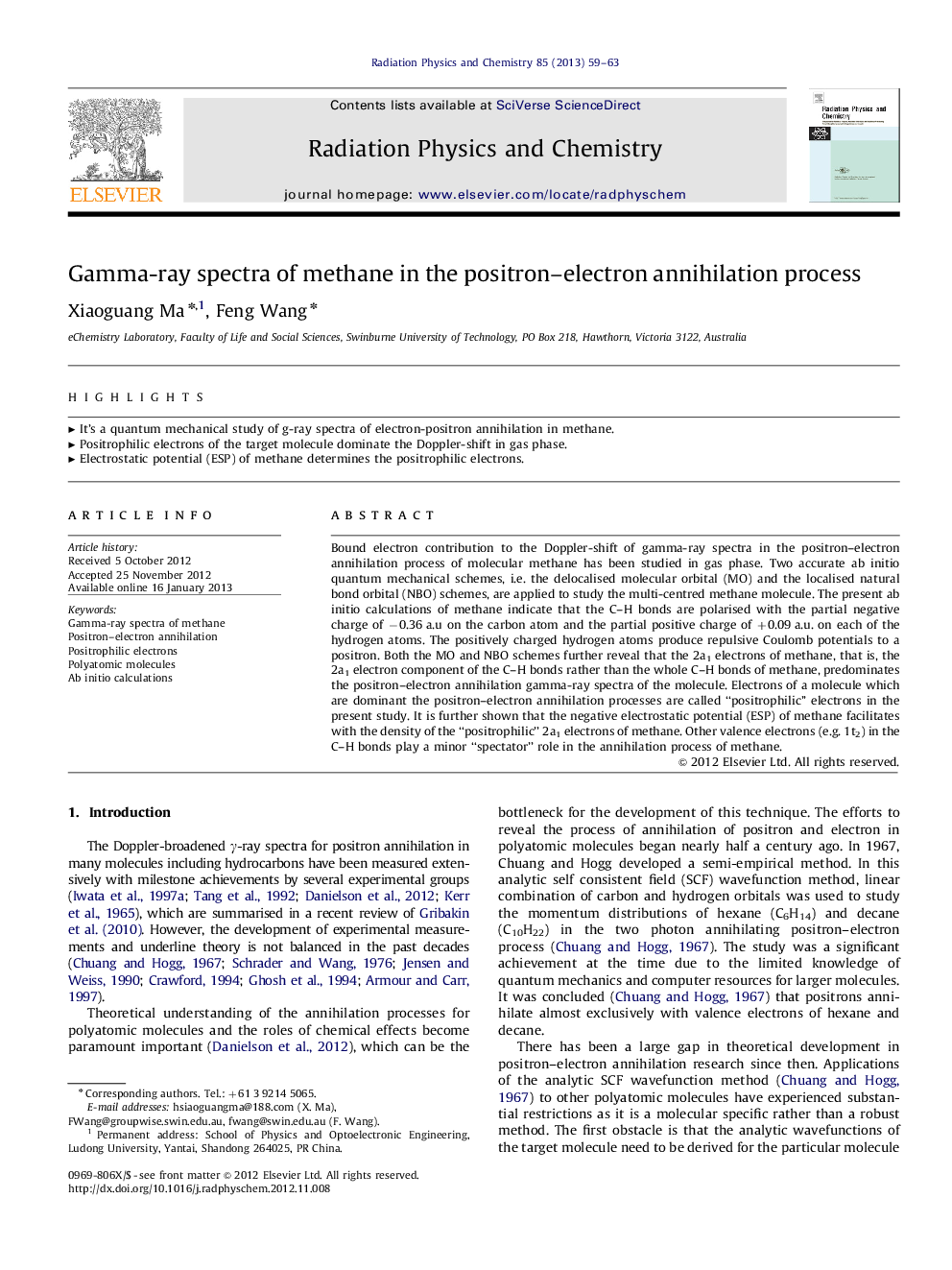| Article ID | Journal | Published Year | Pages | File Type |
|---|---|---|---|---|
| 1886243 | Radiation Physics and Chemistry | 2013 | 5 Pages |
Bound electron contribution to the Doppler-shift of gamma-ray spectra in the positron–electron annihilation process of molecular methane has been studied in gas phase. Two accurate ab initio quantum mechanical schemes, i.e. the delocalised molecular orbital (MO) and the localised natural bond orbital (NBO) schemes, are applied to study the multi-centred methane molecule. The present ab initio calculations of methane indicate that the C–H bonds are polarised with the partial negative charge of −0.36 a.u on the carbon atom and the partial positive charge of +0.09 a.u. on each of the hydrogen atoms. The positively charged hydrogen atoms produce repulsive Coulomb potentials to a positron. Both the MO and NBO schemes further reveal that the 2a1 electrons of methane, that is, the 2a1 electron component of the CH bonds rather than the whole CH bonds of methane, predominates the positron–electron annihilation gamma-ray spectra of the molecule. Electrons of a molecule which are dominant the positron–electron annihilation processes are called “positrophilic” electrons in the present study. It is further shown that the negative electrostatic potential (ESP) of methane facilitates with the density of the “positrophilic” 2a1 electrons of methane. Other valence electrons (e.g. 1t2) in the CH bonds play a minor “spectator” role in the annihilation process of methane.
► It's a quantum mechanical study of g-ray spectra of electron-positron annihilation in methane. ► Positrophilic electrons of the target molecule dominate the Doppler-shift in gas phase. ► Electrostatic potential (ESP) of methane determines the positrophilic electrons.
